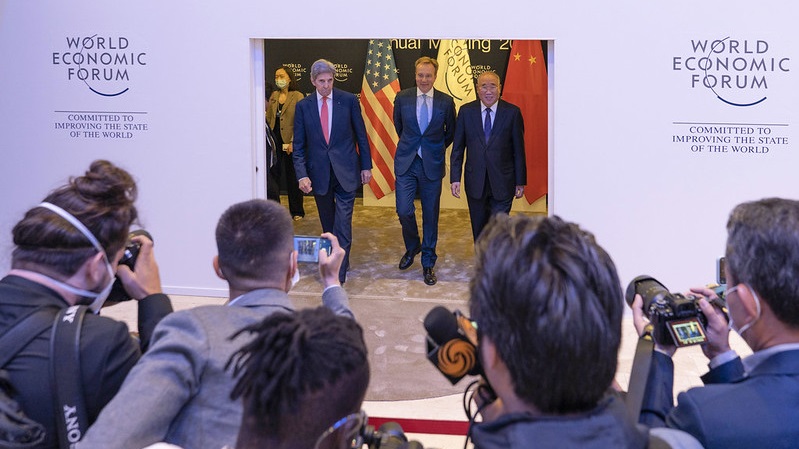After a tense year, the steady defrost in the US-China relationship and the expected face-to-face meeting of President Joe Biden and President Xi Jinping next week in San Francisco offers tantalising hope on climate action.
As President Biden said at this year’s United Nations General Assembly, progress on some issues hinges on their common efforts and “nowhere is that more critical than the accelerating climate crisis.”
Much ink has been spilled debating whether the US and China should cooperate or compete on addressing climate change.
These debates obscure a more important question: if revived, what could US-China cooperation on climate actually achieve?
As it turns out — a lot.
On one hand, as all countries work to implement their emissions reduction targets under the Paris Agreement, global climate progress no longer hinges so heavily on US-China cooperation.
But a high-level US-China agreement could provide the much-needed “course correction” to keep world temperatures on track to remain below 1.5C.
And it could also set the stage for a successful outcome at the Cop28, the UN’s largest annual international climate conference taking place the first two weeks of December in Dubai.
Based on what both countries are already prioritising, there is room for significant partnership when it comes to keeping domestic emissions reductions on track, raising ambition in multilateral negotiations, and accelerating climate action in developing countries.
Methane controls
Leaders from both countries have an opportunity to show that climate cooperation between the world’s two largest emitters shouldn’t just mean searching for the lowest common denominator.
To start, China’s recent delivery on its 2021 pledge, made alongside the US, to develop a plan to control methane has helped to restore trust.
Integrating non-CO2 gases into China’s climate targets would further assuage concerns that methane leakage from coal mines and other sectors could undermine action elsewhere.
Likewise, a commitment to limit emissions from burning coal could provide assurance that new coal plants won’t compromise climate targets.
In these areas, the US could lend monitoring and mitigation expertise, including from the development of its updated Methane Emissions Reduction Action Plan this year.
Hedging against a Republican administration
From China’s view, the potential for a Republican administration threatens the stability of US action and engagement.
To hedge against this, leaders on both sides could jointly endorse subnational and non-governmental cooperation.
This could pave the way for more partnerships that embed climate cooperation at multiple levels and across sectors, building on California’s recent agreement with a slew of Chinese provinces.
World Bank to initially host loss and damage fund under draft deal
US climate envoy John Kerry and his Chinese counterpart Xie Zhenhua are slated to co-host a local climate action summit during Cop28.
This could provide further opportunities to showcase and institutionalise multi-level cooperation on a global stage.
Unlocking higher global ambition
Finally, US-China cooperation could tackle thorny issues in the UN climate negotiations and unlock greater ambition.
Early, explicit communication of US-China consensus on the structure and ambition of NDC climate plans due in 2025 could lay the foundation for global consensus and position both countries as credible actors.
So too could joint communication of expectations for the new post-2025 goal on climate finance, known as the NCQG.
Doing so before Cop28 could inject important momentum ahead of a major milestone when countries will assess progress and gaps towards global climate goals – much like back in 2015, when the two countries helped lay the groundwork for the Paris Agreement by announcing their climate targets early, and together.
US raising climate finance
Perhaps US climate finance ambition could be the necessary show of goodwill to move talks forward.
This ambition was demonstrated by recent attempts to secure additional funding from Congress, supporting international financial reform at the annual meetings of the International Monetary Fund and the World Bank in early October, and an unspecified commitment to the Green Climate Fund.
For its part, China has expressed willingness to work with the US on green projects in developing countries.
Cooperation could address gaps by combining both countries’ respective strengths, such as China’s nimble construction capacity and US experience engaging with local stakeholders.
While joint projects may face hurdles, even conducting regular exchanges about shared challenges could improve investment outcomes for all sides – including, crucially, recipient countries – and create a multiplier effect.
None of this will be easy, but it is in both countries’ interests. Institutionalizing climate cooperation could weave a safety net for the US and China in light of other tensions.
New joint action could lend credence to their claims of being cooperative international players on climate – not to mention enabling substantive progress.
Kate Logan is associate director of climate at the Asia Society Policy Institute and a fellow at the institute’s Center for China Analysis.
